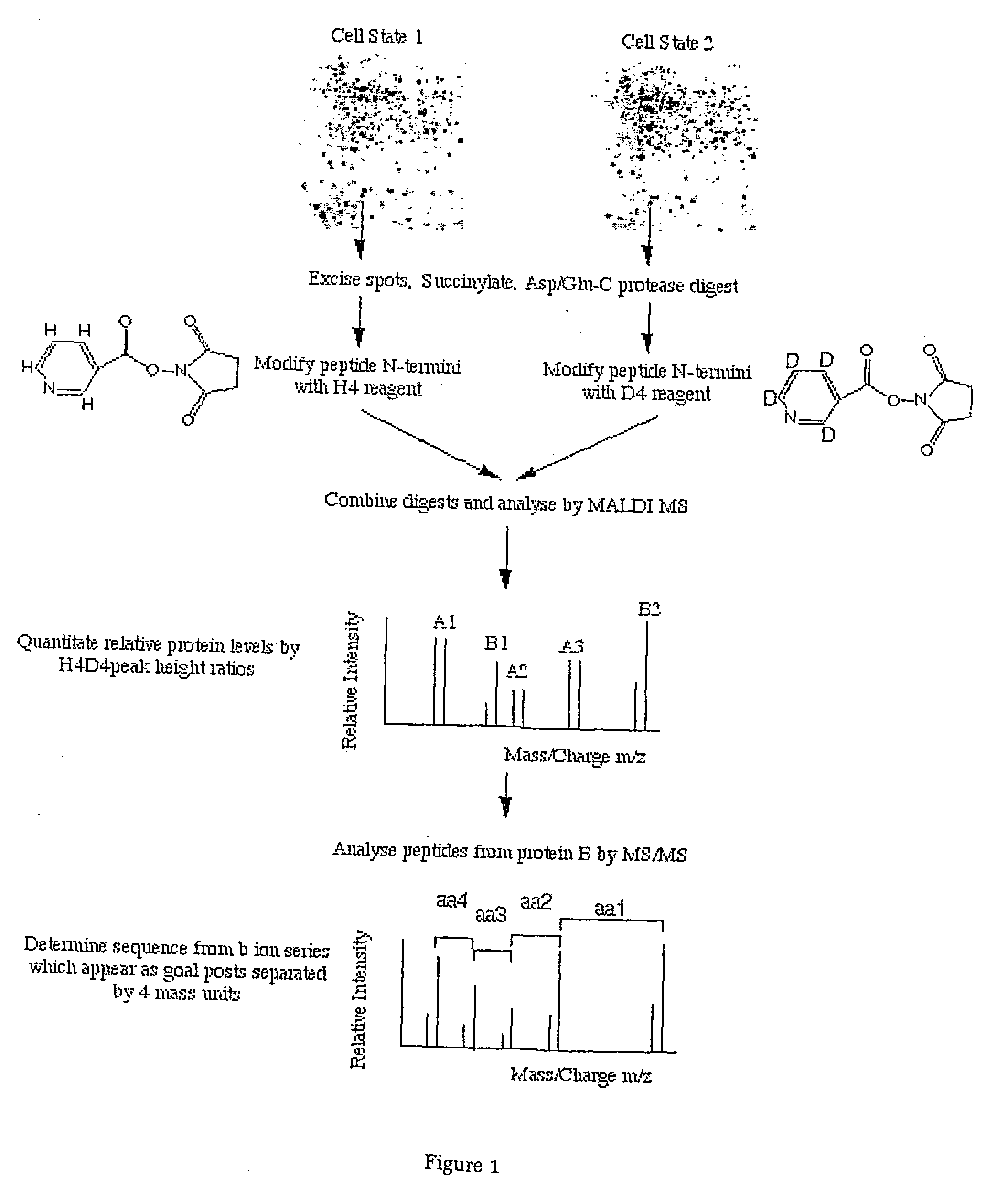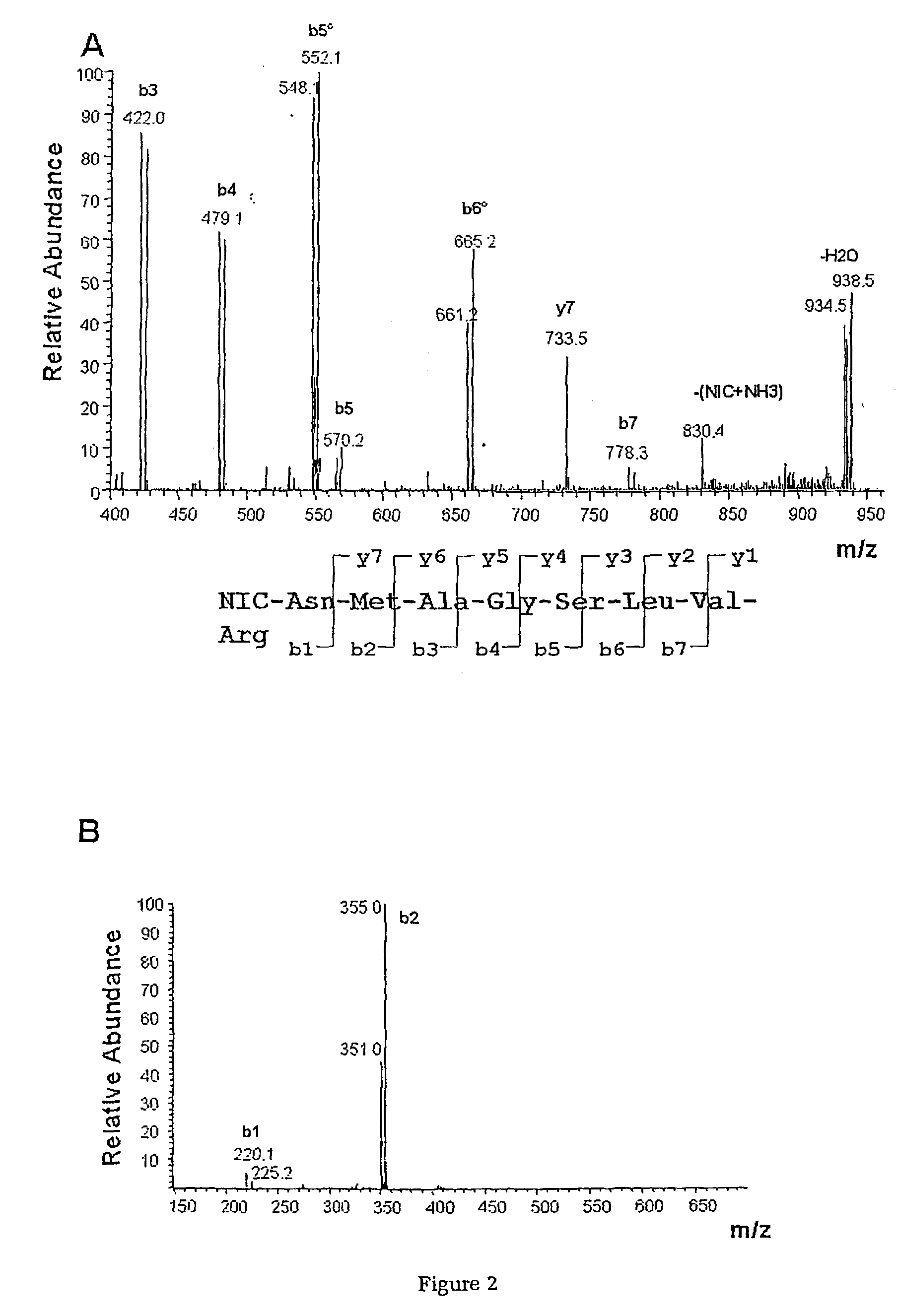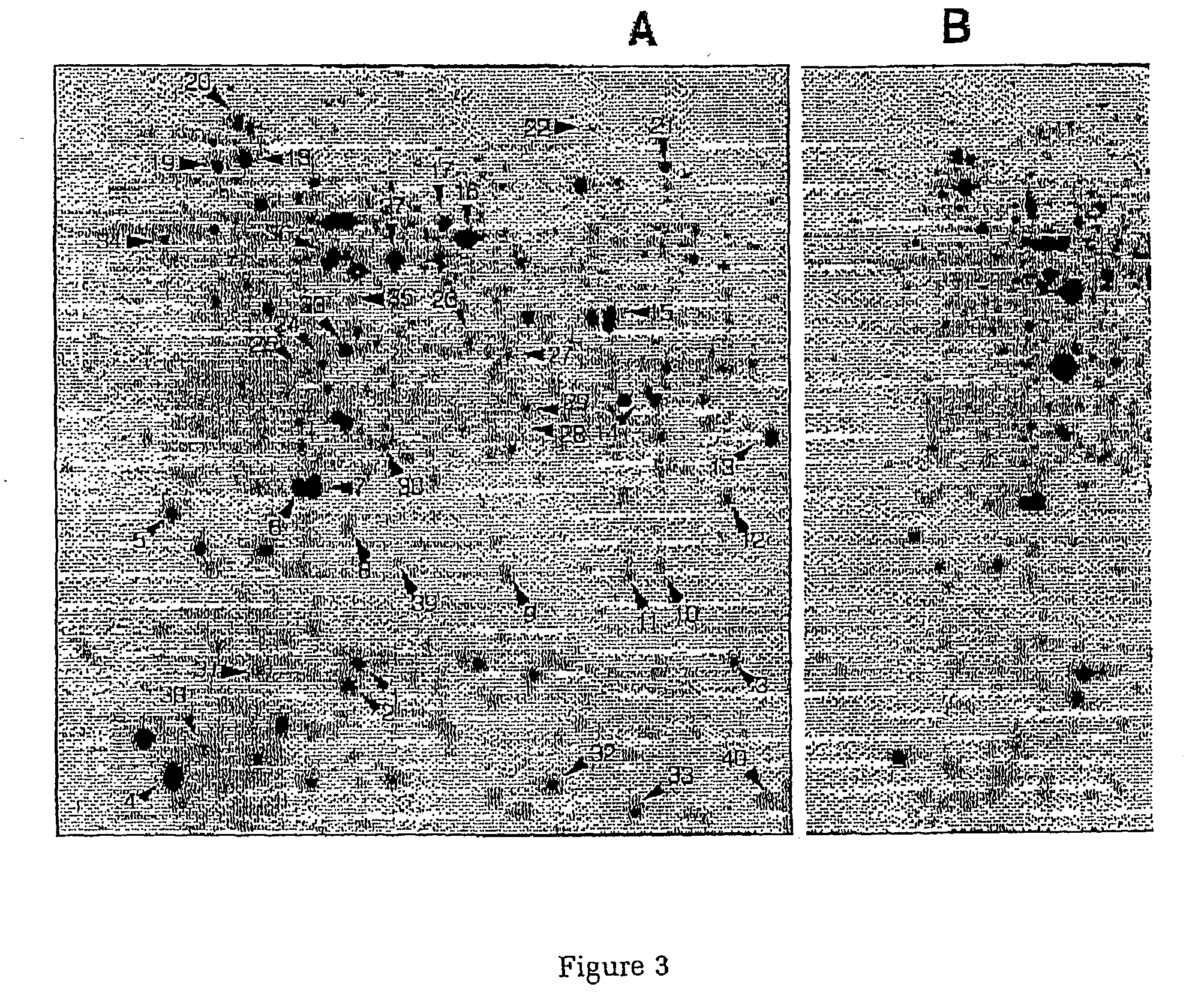Macromolecule detection
a micromolecule and detection method technology, applied in the field of micromolecule detection, can solve the problems of low reproducibility of staining procedures, method not always reliable, and no universal answer
- Summary
- Abstract
- Description
- Claims
- Application Information
AI Technical Summary
Benefits of technology
Problems solved by technology
Method used
Image
Examples
Embodiment Construction
Experimental Protocol
[0059] Synthesis of the 1-(H4 / D4 nicotinoyloxy) succinimide (H4 / D4-Nic-NHS) esters
[0060] Nicotinic acid was dissolved in dry tetrahydrofuran and mixed with one equivalent of dicyclohexylcarbodiimide under continuous stirring in a reaction flask for 2 hours at room temperature. One equivalent of N-hydroxysuccinimide were added to the solution and stirred over night at room temperature. The precipitate was recovered by filtration and purified by recrystallisation from ethyl acetate.
[0061] Chemical Modification of Proteins
[0062] Escherichia coli MC4100 was obtained from the laboratory collection (16) and the bacteria were cultivated in a synthetic medium with either 5 or 100 mM Glucose as the sole carbon source. Sample preparation and 2D-gel analysis was carried out as described previously (17). Gels were scanned in a Personal Laser Densitometer (Molecular Dynamics, Sunnyvale, Calif., USA) and image analysis, spot matching and quantification were performed using th...
PUM
| Property | Measurement | Unit |
|---|---|---|
| Mass | aaaaa | aaaaa |
Abstract
Description
Claims
Application Information
 Login to View More
Login to View More - R&D
- Intellectual Property
- Life Sciences
- Materials
- Tech Scout
- Unparalleled Data Quality
- Higher Quality Content
- 60% Fewer Hallucinations
Browse by: Latest US Patents, China's latest patents, Technical Efficacy Thesaurus, Application Domain, Technology Topic, Popular Technical Reports.
© 2025 PatSnap. All rights reserved.Legal|Privacy policy|Modern Slavery Act Transparency Statement|Sitemap|About US| Contact US: help@patsnap.com



